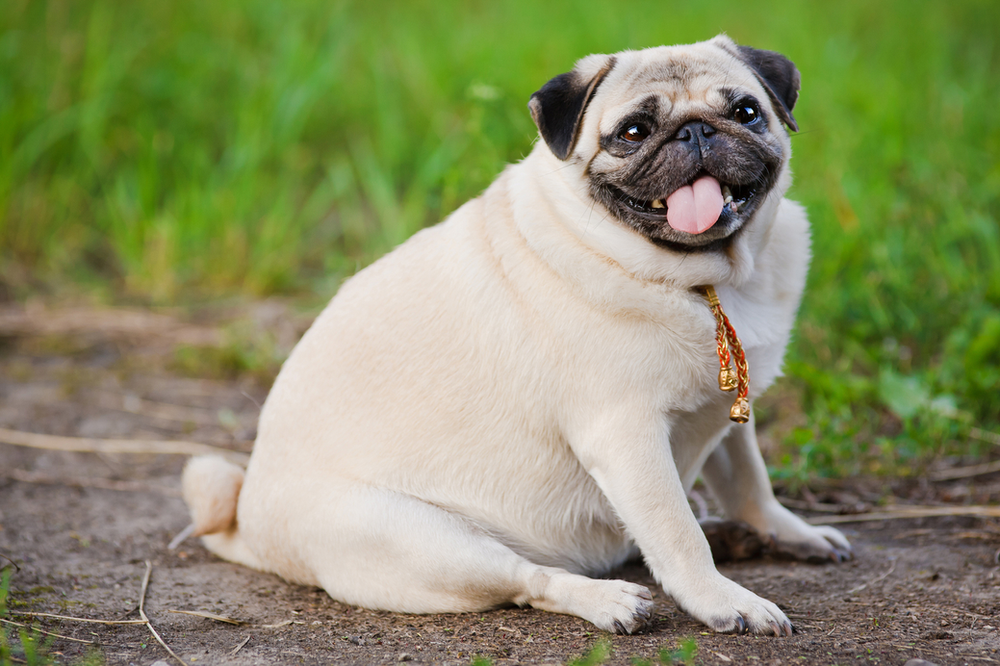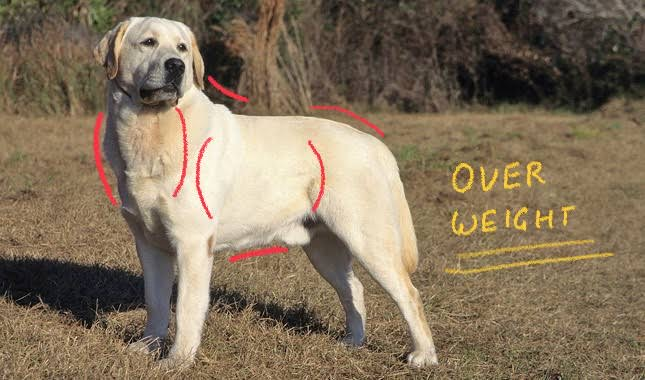
How do you know if your dog is overweight?
Surprisingly the answer is not in the weight charts! Despite their long standing use across the world for decades, weight charts are outdated and redundant. A body condition score is the more accurate way to find out if your dog is overweight.
Overview:
Observations in my practice as a Canine nutritionist are, that most people will recognize an obese dog and almost all of them will agree that the dog needs to lose weight. Parents or family members of such a dog may not know how to go about it, or they may have some ideas on what needs to be done. They will mostly just know that “something” needs to be done. And the lack of knowledge of what or how to do it, may stall them a while. Some might consult with their veterinarian, and get advised to put the dog on a “Prescription Diet food” from a kibble manufacturer and even get warned about some of the health risks relating to the current obesity. Some of them will look for a Dog Nutritionist and end up with me.
Obesity is often recognized for what it is, and sooner or later most dog families are advised to “do something” about it. And although the sheer number of obese dogs today is a matter of serious concern, what i really want to focus on today is that phase before obesity – A broad category called – Overweight.
Most dogs actually fall into the category of overweight dogs, and not yet obese. We, as the dog community have gotten so accustomed to seeing plump or “healthy fat” (as many like to call them) dogs that we no longer feel the warning signs while there is still time to save our beloved dogs from reaching obesity. We seem to be making a variety of excuses for the excess weight, by calling it well fed, cute, plump, furry or chubby.
Why are a few extra kilos a problem for my dog?
It may seem like they gained all the weight overnight, But they didn’t! It is a slow process of steady weight gain that starts putting the body under duress from the very first kilo gained.
We have started failing to recognize the first few kilos as a threat to our dog’s health. We are failing to catch it in time and to treat it with the much needed urgency that it deserves.
The trend is similar in humans as well. We do not take the first kilo or two we gain during the holidays very seriously, till it sets in and “suddenly” we seem to be 5 kilos overweight. Some wont notice it till 10 kilos! But for dogs, 5 kilos can be 25-30% excess body weight, that their musculoskeletal structure was not built for. So why is being a few kilos overweight so dangerous for your dog? Well, because every single extra kilo that your dog’s body has to carry around, lends a hand at creating and sustaining low grade inflammation throughout the body. Since dogs are quadruped animals, let’s compare them to a bridge. If a bridge were to be built to take a certain amount of load, then it is also built to evenly balance and distribute that load over the pillars at either ends. Like the limbs of a dog. Similar to a bridge the dog’s body is also built to endure and sustain a little more than the optimum amount of weight. However, constant pressure on the pillars (limbs and spine), is bound to cause long term damage to the integrity of the structure itself.

In case of a dog, if their general lifestyle is conducive to gaining a kilo, then it will most likely be the cause of continuous steady weight gain, only increasing the pressure and load on the joints, spine, neck and muscles. Thus causing a constant low grade inflammatory response in the body.
Why do dog breed weight charts don’t work?
The primary concern and cause is the kind of food and quantity we feed. And more often than not, it is the direct cause of having an overweight dog. However, the secondary culprit for having overweight dogs is the breed and weight charts that allow for such a large variance as an appropriate weight bracket for your dog. This allows people to put their concerns (if any) to rest and tell themselves that their dog is slightly on the heavier side but still well within the weight range for their breed.
Well, there are several problems with these weight charts.
•To start with, apart from being fairly redundant, they do not take the individuality of your dog into consideration. Your dog could be big boned, taller, muscular or smaller than the usual of its breed.
•They do not take mixed breeds into consideration. As many of us know, there are plenty of mixed breed dogs out there. And there are our Indies that don’t even make it to the charts!
•They can show us a variation as high as 15-25% and that is where our biggest concern lies. For eg. if the chart says that your dog should be 20kg to 25kg. This is a 25% variance. So if your dog is a height and size that is meant to be ideal and lean at 20kg, alarm bells won’t go off in your head till your dog approaches 24-25kg or even crosses 25kg which is 25% more than they should be! 5% to 15% excess weight is categorized as overweight. 15% to 25% is categorized as Obese! And 25% + is categorized as morbidly obese! We can now see why most people only take notice when their dog is well on their way to obesity or is morbidly obese!
The Brown Labrador below weighs about 20% more than the Black Labrador on the right. This Variance is “allowed” for in the weight chart. But once put side by side, one can clearly see the difference. One is an overweight dog and one is in perfect body condition in terms of weight.


So you see, the traditional weight charts, actually allow for obesity and morbid obesity to creep in without ringing alarm bells that should be rung loud and clear at the very first Kilo of excess weight.
What is the alternative to weight charts for dogs?

So what is the solution? It is actually quite simple and straightforward. A chart that can allow you to determine if YOUR particular dog, in all their uniqueness is at his/her optimum weight. Taking their height, skeletal structure, muscularity, head size and length into consideration.
The body condition scoring system (Click here) looks at all the variables mentioned above. It is a “look and feel” test of your dog’s body. Like mentioned, it is very simple, it allows you to determine, if your dog looks like the ideal body and feels like the ideal body type.
This system allows you to check your dog in the comfort of your own home and check them on a weekly/ fortnightly basis, so that you can “catch” the changes quickly and course correct if need be.
My dog is overweight…what do I do?
A side note: Many of you will most likely perform the body condition score on your dog today after reading this. And some of you might find that your dog is indeed packing on a few extra kilos. For Most people the very obvious “course correction” in order to get those kilos off is to increase exercise like introduce longer walks, running, playing fetch and so on. Along with some cut backs on the quantity being fed. Before you do that, Please take the time to read more (Click here) about how over exercising your dog when already overweight leads to more damage to already stressed joints and can cause chronic pain.
Conclusion:
Weight charts for various breeds are no longer applicable in todays world. They have long become redundant and do not take the individuality of your dog into the equation. The body condition scoring system is a far more reliable way of checking your dog’s body for excess weight. And it is so simple, you can do it at home without having to weigh him/her. Learn how to perform a BCS on your dog here.
Many of you might have a question after reading this… what is my dog’s ideal weight? I am tempted to say – Does it matter? Think about it! If you get your dog into the ideal body shape, does it really matter what he or she weighs at that point as long as they are lean and fit? But if you do want to know the number, then first get them into the ideal shape. Weigh them, and thats your number. When asked how much weight does my dog need to loose? My answer is more often just an educated guess. The real answer is “I don’t know.” We need to start the weight loss, get them to a right shape and then we will know how many kilos we needed to shed to get there.
I truly hope this information is going to inspire each of you to try the BCS on your dogs and get motivated to take action. If you have discovered that your dog is overweight, and have questions please leave a comment, or tell us how you plan to put – “Mission weight loss” into effect?



